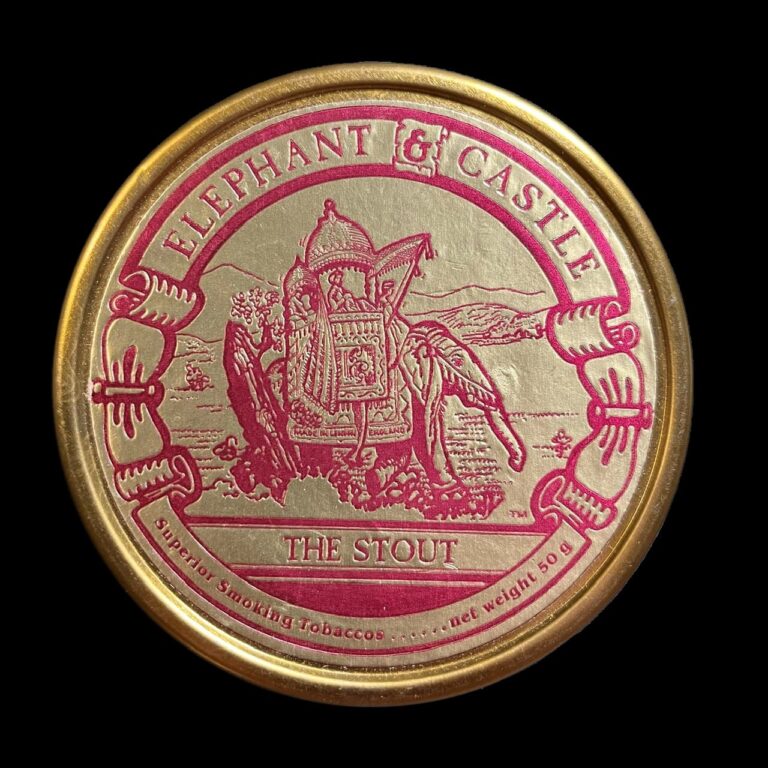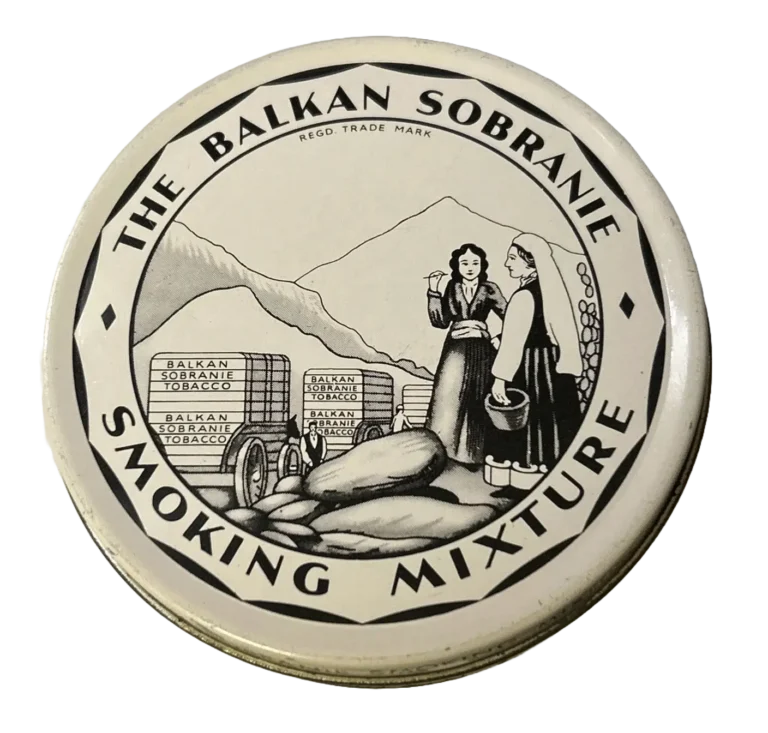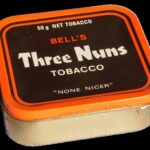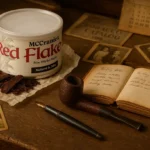A Comparative Review of 20-Year Aged Dunhill Early Morning Pipe vs. 5-Year Aged Peterson Early Morning Pipe
Introduction
Early Morning Pipe is one of the most recognizable English blends in pipe smoking. Originally produced by Dunhill, and later taken over by Peterson using the same recipe and factory (STG), EMP is a light-to-medium English made with Virginias, Orientals, and Latakia. It’s widely regarded as a gateway to English blends and a benchmark for morning smokes.
But how does this venerable blend change over time? And how different is a 20-year-aged tin of Dunhill compared to a 5-year-aged tin of Peterson?
This review explores the evolution of the blend, how age affects its constituent tobaccos, and what you gain—and lose—across decades.
Blend Composition Overview
| Component | Function in the Blend | Age Sensitivity |
|---|---|---|
| Virginia | Base sweetness, citrus/hay backbone | High aging potential (20+ yrs) |
| Oriental | Spice, floral nuance, aromatic lift | Medium to high (5–20 yrs) |
| Latakia | Smoky depth, campfire/leather richness | Moderate (peaks around 5–8 yrs) |
Tin Condition and Preparation
Dunhill (20 Years)
- Appearance: Lighter in color than expected—muted browns, some sugar crystal formation. Dry but still pliable.
- Tin Note: Deeply fermented. Notes of dried fig, incense, sweet leather, and an almost mulled wine aroma. Very little Latakia sharpness remains.
- Prep: Crumbles easily into fine ribbons. Moisture content is minimal. Needs no dry time.
Peterson (5 Years)
- Appearance: Bright yellow and reddish-brown Virginias with darker flecks of Latakia. Springy and slightly tacky to the touch.
- Tin Note: Classic EMP—zesty Virginia citrus, sharp Orientals, and a hearty campfire Latakia smokiness.
- Prep: Requires minimal rubbing. Benefits from 10 minutes of air exposure.
Smoking Journal
Lighting and First Third
Dunhill EMP (20 Yrs)
- Flavor: Smooth entry. The Virginias dominate with rich, dark fruit sweetness—fig, date, and honeyed oats. No harshness or bite. The Latakia is ghostlike—just a faint trace of smoke and charred oak.
- Texture: Velvety. Zero tongue bite. Smoke is cool and silky.
- Pace: Begs for a slow cadence. Too much puffing thins the flavor.
Peterson EMP (5 Yrs)
- Flavor: Lively. Bright Virginias lead with citrus peel and fresh hay. The Orientals come next—peppery, woody, and slightly sour. Latakia provides structure with smoky, leathery depth.
- Texture: Creamier than fresh tins, but still brisk. Has some tanginess on the retrohale.
- Pace: Smokes best at a moderate rhythm. Too slow and it can smolder dull; too fast and the Orientals bite.
Middle Third
Dunhill
- Profile Evolution: The blend hits a stride. Orientals unfurl with incense, nutmeg, and aged wood. A subtle floral tone weaves into the sweetness. Latakia adds a background hum—more texture than taste.
- Balance: Everything is integrated. No single component stands out. It’s cohesive, like sipping well-aged Scotch.
- Complexity: Deep but quiet. Flavors don’t leap; they unfold slowly with nuance.
Peterson
- Profile Evolution: Virginias mellow slightly, but still feel young. Orientals begin to lead, adding pepper and dried herbs. Latakia gets smokier, especially retrohaled.
- Balance: Defined lanes. Each tobacco speaks clearly, but they haven’t fully married yet.
- Complexity: Punchier. There’s contrast between top, mid, and base notes. Not as layered, but more expressive.
Final Third
Dunhill
- Flavor: Becomes softer and earthier. The sweetness tapers, replaced by old leather, cedar, and a touch of bittersweet cocoa. Still no harshness. Clean finish.
- Burn: Flawless down to the heel. Ash is powdery white-gray.
- Overall Impression: Graceful, aged elegance. Like an old book—faded but full of character.
Peterson
- Flavor: Latakia dominates in the final stretch. Earth, smoke, and pepper carry through. Virginias take a back seat. Slight bitterness if puffed aggressively.
- Burn: Even, with some relights toward the end. Ash is darker and fluffier.
- Overall Impression: Still vibrant. Ends with a strong English identity intact.
Aroma (Tin and Room Note)
| Characteristic | 20-Year Dunhill | 5-Year Peterson |
|---|---|---|
| Tin Note | Sweet leather, dried fig, incense | Campfire, hay, floral spice |
| Room Note | Mild, woody, slightly sweet | Smoky, peppery, classic English |
| Retrohale | Warm, floral, slightly fruity | Spicy, leathery, zesty |
Comparative Summary
| Feature | Dunhill (20 Yrs) | Peterson (5 Yrs) |
|---|---|---|
| Virginia Flavor | Honeyed, fig, caramel | Hay, citrus, zesty |
| Orientals | Integrated spice, incense, floral | Spicy, peppery, slightly sour |
| Latakia Presence | Subtle hum, background texture | Prominent, smoky, leathery |
| Texture | Silky, elegant | Bold, slightly gritty |
| Complexity | Layered, soft transitions | Structured, sharper contrasts |
| Overall Experience | Gentle, contemplative, refined | Punchy, classic, expressive |
| Ideal Audience | Fans of aged subtleties | Traditionalists, English blend lovers |
Conclusion: What Does Time Give—and Take?
The Dunhill tin, after 20 years, becomes something different than it started: a smooth, cohesive blend where all the players harmonize like a well-rehearsed orchestra. Its Latakia has softened, its Virginias have darkened and sweetened, and the Orientals contribute elegance rather than bite. But it’s not energetic. It’s a quiet smoke—perfect for the end of a long day or a quiet morning with no obligations.
The Peterson tin, at five years, is lively and expressive. It still speaks with the full voice of a younger English blend, though slightly mellowed. You can still taste where each leaf begins and ends, and that clarity has its own charm. It’s a snapshot of EMP in its prime—structured, balanced, and bold.
Final Verdict
- For aged sweetness and subtle complexity: Reach for the 20-year-old Dunhill.
- For a fuller, more classic English punch: The 5-year-aged Peterson is the one.
Both represent Early Morning Pipe well—but they speak from different decades. One with wisdom. One with strength.








